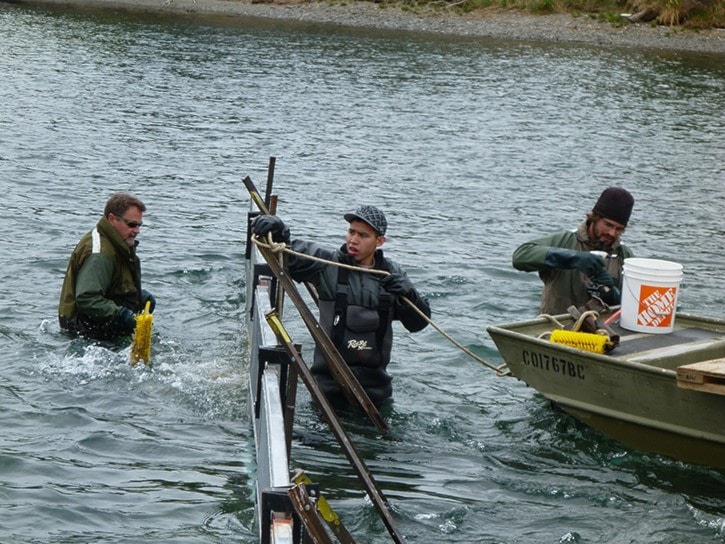Counting fish can be a tricky business, however, more than 17 million salmon smolts have been tabulated so far in the Chilko Lake system and many million more are expected.
According to Tsilhqot’in National Government (TNG) Fisheries Manager Paul Grinder, every year Fisheries and Oceans (DFO) and TNG take on the Chilko project as part of their regular work jointly managing the salmon fisheries.
With an ever tightening budget, and the increasing demands on the salmon industry, he said the job of managing the fishery is a challenge to say the least.
“There are so many factors that come into play, it’s a real challenge,” Grinder said of environmental, economic and social pressures associated with the declining runs of sockeye, chinook and coho salmon as well as steelhead.
“It’s all become very political.”
Politics aside, Grinder said he is happy with the research being conducted on the Chilko sockeye, referred to by scientists as a “super fish” due to its genetic uniqueness, such as spawning at a high elevation.
“This particular stock is an indicator species.”
Currently Grinder said most salmon stocks in the province are in trouble, and even the most hardy Chilko run is in decline, according to the studies.
Of particular concern, he said, is the smaller Taseko salmon run, which is a tributary of the Chilko.
He is hoping they can undertake studies of that troubled run in the future.
In the meantime, the yearly study of the Chilko downstream smolt count will continue, using a fish fence to corral yearling smolts through gates as they make their way out of Chilko Lake and toward the ocean.
Grinder said two sheds are set up at the gates with staff who physically count the smolts and also take their picture from above to count a second time later before releasing them through the gates for another set to go through.
He is also pleased about a new fish tagging program being conducted by UBC researchers which may help determine how quick the fish travel, where they travel and when they travel using information gathered by inserting very small chips into smolts.
“There’s really not a whole lot of knowledge around salmon,” he said, noting the Chilko run is one of the few stocks left that can afford the mortality risk that comes with such a study.
“It’s a good study, I think ... when it comes to fisheries, I hate to say it, but it’s a bit of a guessing game. So the more that can be known the better.”
This year is expected to be the largest run in the salmon’s four-year cycle. Typically the Chilko run averages about 600,000 fish, however four years ago the run ballooned to an estimated seven million returning salmon.
In other years however, such as 2009, government predictions have fallen very short, prompting the Cohen Commission of Inquiry Into the Decline of Sockeye Salmon in the Fraser River.
The Cohen Commission took three years, 2,145 exhibits, 892 public submissions and 138 days of hearings with 180 witnesses to create its report and came up with 75 recommendations to rebuild the Pacific salmon stocks.
Grinder said few recommendations from the Cohen inquiry have been followed to date and he predicts a collapse of the fishery before leaders will take meaningful steps to rebuild the stocks.
